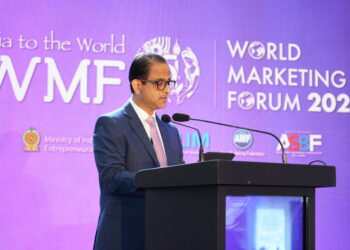
Strategically situated at the crossroads between the East and the West, Singapore has fully exploited its prime geographical location to emerge as one of the world’s premier trading hubs. It provides global connections, with an efficient network of port and airport facilities servicing more than 800 shipping lines and 67 airlines.
Underpinning Singapore’s success as a centre for trade and economic activity are its excellent communications and transportation links, sophisticated commercial and financial infrastructure political stability, and a highly-skilled and committed workforce.
World class facilities
Considering it is one of the world’s smallest countries, Singapore’s achievements are even more remarkable. It’s port is the busiest in the world in terms of shipping tonnage.
In 1994, Singapore Changi Airport was voted “Best Airport in the World” for the eighth successive year by readers of the UK-based magazine Business Traveller, and in 1993 occupied top spot in Conde Nast Traveller’s first readership poll on international airports. Changi won high ratings for on-time reliability of flights, bag gage retrieval, customs and immigration clearance, accessibility parking convenience, and restaurant and accommodation facilities Other magazines which have named Changi best airport in the world include Executive Traveller UK), Business Traveller International (US), Business Traveller (AsiaPacific), Travel Trade Gazette Asia, PATA Travel News, and Cargonews Asia.
Economic prosperity
Despite its compact land area of 646 square kilometres, a dearth of natural resources and a small domestic market of only three million people, Singapore has demonstrated that success need not be relative to size. It has capitalized hugely on its two main resources people and location to become one of Asia’s economic powers, with a gross domestic product in 1994 of S$105 billion, an increase of $813 billion over the 1993 figure. Inflation has been kept consistently low, with a rate of less than 3.5 % for the last 10 years. Although double-digit growth is a thing of the past, Singapore still maintains a healthy expansion rate, with 10.1% growth in 1994 and a projected growth of 7-8% for 1995.
The world’s third largest oil-refining centre, Singapore also deals in rubber, tin, coconut, rice, timber, jute, spices and coffee. Its manufacturing output includes electronic and computer-related products and components, printing and publishing, fabricated metal products, food, machinery, chemicals, paints and pharmaceuticals.
The island-state has a strong services sector, being the regional base for a large number of banks, financial institutions and multinational companies. It is also a centre for communications, logistics, engineering, medical, hospital management, corporate training and leisure services.
Singapore’s workforce, rated the world’s best for 10 consecutive years by the ‘Business Environment Risk Information’ (BERI) report, has been a major factor in the achievements of this islandstate. The literacy rate is over 90%, with most Singaporeans able to speak at least two of the four official languages English, Chinese, Malay and Tamil.
Communications hub
A sophisticated telecommunications infrastructure has acted as an effective catalyst for Singapore’s economic growth. Worldwide telecommunications services are provided via satellite links, submarine cables and radio frequencies. Singapore’s telecommunications industry has been privatised recently to give added impetus to its global expansion plans.
Tourism
Tourism is a major economic force in Singapore, generating S$10.89 billion in tourist receipts in 1994. One in every 12 Singaporeans has a tourism-related job. The Lion City attracted more than seven million visitors in 1995, twice the local population, making it one of the few countries where visitors outnumber residents.

Singapore is home to some of the world’s best hotels, including the legendary Raffles Hotel, recently revitalised at a cost of S$160 million. For conventions, Singapore is rated as Asia’s top destination and the sixth best venue in the world by the Union of International Associations. It is also Asia’s premier exhibition venue.
A shopper’s paradise, Singapore offers a huge variety of shops from the glittering malls and department stores of Orchard Road to traditional shophouses selling a vast array of merchandise. Top tourist attractions include Singapore Zoological Gardens, Jurong Bird Park, the Haw Par Villa Chinese mythology theme park, the island resort playground of Sentosa, and the ethnic districts of Chinatown, Little India, Arab Street and Kampong Glam.
Arts and information centre
In its bid to turn Singapore into an international centre for the arts, the Government has set aside S81 billion to invest in cultural facilities over the next decade. The introduction of attractive tax breaks and permanent resident status for artists and art professionals is also designed to attract foreign talent to help develop the arts scene and to encourage Singaporean artists and performers.
Efforts to boost Singapore’s image as an information centre have resulted in numerous media organisations choosing Singapore as their regional base. Asia Business News, a regional satellite business and financial news service, is the latest entrant, joining Home Box Office of the US and BBC World Service radio.
A bright future
Singapore is well positioned to benefit from the anticipated economic expansion of the Asia-Pacific region. World economists forecast that economic growth in East Asia will average 8% annually during the 1990s. By the year 2000, East Asia’s gross domestic product will equal that of the United States and will be fourfifths that of the European Community. As the world’s economic centre of gravity shifts East, Singapore with its ideal geographic location and excellent infrastructure will play a pivotal role in the development of the region.
Singapore has formed at number of alliances in pursuit of economic development, notably its triangular relationship with Malaysia and Thailand. The proposed Asean Free Trade Area will bring together Asean’s domestic markets to form a combined market of 330 million people. The aim is to gradually reduce tariffs on manufactured goods to a maximum of 5% by 2008. Recognising the growth potential of China, Vietnam and India, Singapore is also strengthening its trade and economic links with these countries.
The future success of Singapore depends on its ability to adopt a global approach, facilitate regional and international economic expansion and act as an efficient gateway to Asia.





